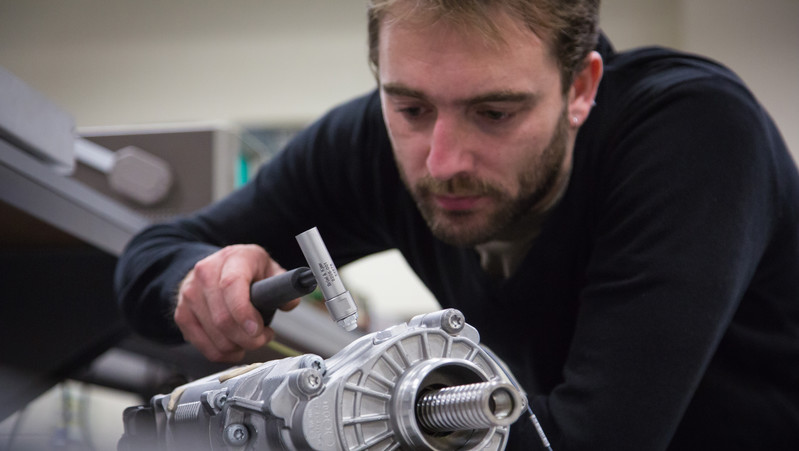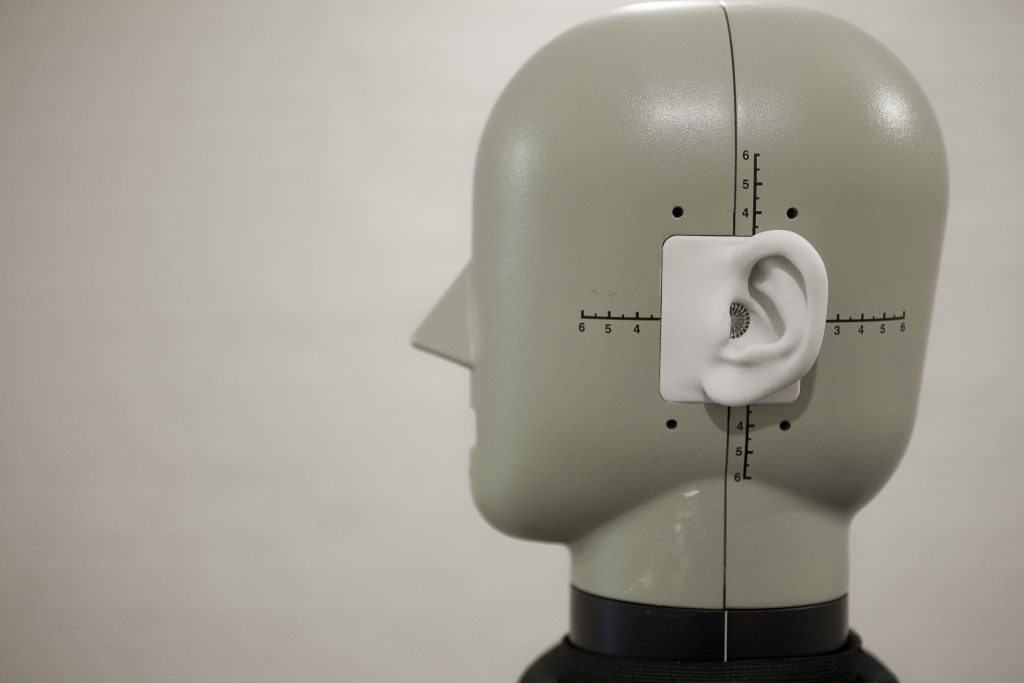Manufacturing and vibro-acoustics
Our research covers many sectors, including: automotive, rail, marine, aerospace, domestic products, energy and building acoustics. Key specialisms include vibro-acoustics, which is about the generation, transmission and radiation of sound from acoustic and vibratory sources. Another is new sources of sound as society moves away from fossil fuels to electric motors. Recent projects include noise from drones and air source heat pumps, or alert sounds created by electronic scooters. We also do extensive work on Product Sound Quality.

Vibro-acoustics
We specialise in developing and implementing novel measurement and modelling methods.
- In-situ methods for characterising airborne and structure-borne sound sources
- Developing virtual prototypes – computational models of assemblies that can be listened to before physical prototyping
- Characterisation of dynamic stiffness for vibration isolators and other resilient elements
- Transfer Path Analysis techniques for diagnostic testing
- Advanced measurement techniques
- Hybrid modelling
- Noise control
Our work on the in-situ blocked force method for structure-borne source characterisation is in international standard ISO 20270:2019 (Characterization of sources of structure-borne sound and vibration — Indirect measurement of blocked forces), which has been adopted worldwide by leading automotive manufactures and OEMs. Other international standards we have been involved with include: EN12354, ISO18312, and BS EN 15657:2017.
Our current and future research focus includes:
- Integrating experimental and numerical methods for vibro-acoustic design
- Developing new methods for the diagnostic testing of structures
- Building Digital Twins and virtual prototypes
- Condition monitoring
Characterisation methods
- In-situ measurement of isolator properties
- In-situ characterisation of acoustic sources
- Propagation of uncertainty for source characterisation
Virtual prototyping
Transfer Path Analysis
- Novel in-situ transfer path analysis method
- Diagnostic testing of building partitions
- TPA-based structural modification method
- Uncertainty propagation in TPA
General contact: Vibro-acoustics
For consultancy research and knowledge transfer please contact Andy Elliott at a.s.elliott@salford.ac.uk
For postgraduate research opportunities please contact Joshua Meggitt at j.w.r.meggitt1@salford.ac.uk
